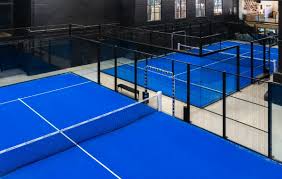

Installing Padel Courts A Comprehensive Guide to Factories and Best Practices
Padel, a rapidly growing sport, combines elements of tennis and squash and has garnered a dedicated following around the world. The increase in popularity has led to a rising demand for quality padel courts, and as such, the establishment of specialized factories to meet this demand has become essential. Installing a padel court involves various factors, from selecting the right materials to understanding the manufacturing process and ensuring compliance with international standards. This article explores the essential aspects of padel court factories and the installation process.
Understanding Padel Court Construction
Before diving into the factories that produce padel courts, it’s important to understand what constitutes a padel court. A standard padel court measures 20 meters in length and 10 meters in width, surrounded by glass walls and metal mesh fencing. The surface can vary but typically includes synthetic grass or concrete for durability and safety.
The Role of Padel Court Factories
Padel court factories specialize in manufacturing the components necessary for building high-quality courts. These factories utilize advanced technology and skilled labor to produce durable panels, flooring, lighting fixtures, and netting systems. Some of the key components manufactured include
1. Glass Panels These provide visibility for spectators and enhance the aesthetic appeal of the court. The glass must be tempered for safety and durability.
2. Metal Structures These frameworks support the glass and mesh enclosures and must be designed to withstand weather conditions and prolonged use.
3. Court Surfaces The flooring materials are crucial for player safety and performance. Factories often offer various options, including artificial turf or cushioned surfaces, depending on customer specifications.
4. Lighting Systems Adequate lighting is essential for night play; thus, specialized lighting systems are often manufactured to ensure optimal visibility.
5. Accessories This category includes nets, scoreboards, and seating areas for spectators.
Best Practices for Installation
Once the components are manufactured, the installation process begins. Here are some best practices to consider
1. Site Preparation Before installing the court, the selected site must be leveled and cleared of debris. Proper drainage systems should also be put in place to ensure water does not accumulate on the playing surface.

2. Foundation Work A strong foundation is critical to the longevity of a padel court. Depending on the surface material selected, the foundation may require different specifications.
3. Assembly of Structure The metal structure supporting the court is assembled first. It must be anchored correctly to withstand the forces exerted during play.
4. Installation of Glass Panels Once the framework is in place, the tempered glass panels are installed. Care should be taken to ensure they are secure and fitted properly.
5. Surface Application The final step is applying the playing surface, whether it is artificial turf or another optimal material. This surface must be aligned perfectly and secured to prevent any safety issues during gameplay.
6. Finishing Touches Adding lighting, scoreboards, and other accessories completes the installation. Ensuring everything is in working order before opening the court to players is essential.
Selecting the Right Padel Court Factory
When considering the installation of a padel court, choosing the right factory is paramount. Here are factors to evaluate
- Experience and Reputation Look for factories with a proven track record and positive customer reviews. An experienced manufacturer can provide insights into the best materials and construction methods.
- Customization Options Different customers have different requirements. A good factory should offer customization in terms of court size, materials, and design.
- Compliance with Standards Ensure that the factory adheres to international standards and regulations for sport facility construction.
- Customer Support After-sales support is vital for maintenance and repairs. A factory that offers comprehensive customer service will be beneficial in the long run.
Conclusion
The popularity of padel is undeniable, leading to increased investments in creating and installing padel courts. As the demand rises, specialized factories are becoming a cornerstone in delivering quality courts that meet player expectations. By understanding the intricacies of court construction and following best practices during installation, sports enthusiasts can enjoy the thrilling experience of padel while also ensuring the longevity and safety of the facilities. Choosing the right factory plays a crucial role in this process, establishing a solid foundation for the growth of padel as a beloved sport globally.
High-Performance Industrial Flooring Solutions China Paddle Tennis Court for Sale
High-Performance Industrial Flooring Solutions Durable & Cost-Effective
Homogeneous Transparent Floor – Durable & Stylish Rubber Floor Solutions
Premium Homogeneous Transparent Floor for Durable & Stylish Spaces Rubber Floor Solutions
Premium Sports Floor Solutions Durable PVC Sports Floor & Rubber Floor for Gyms
Durable Rubber Composite Floor Premium Rubber Floor & Mats Solutions